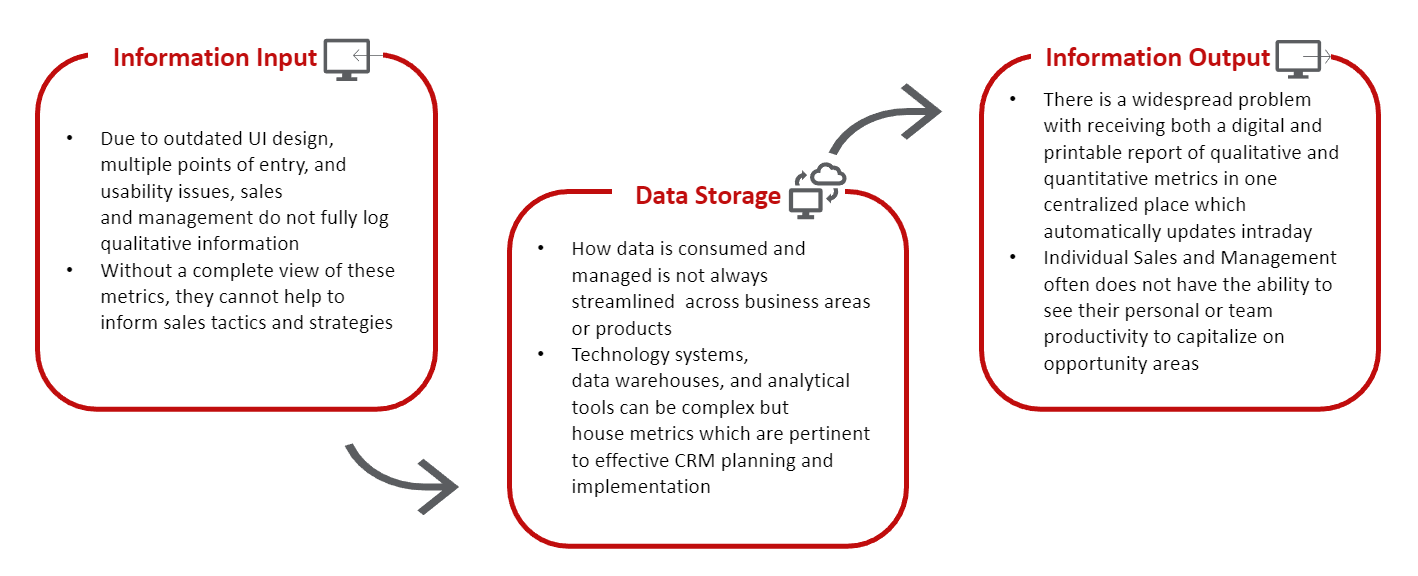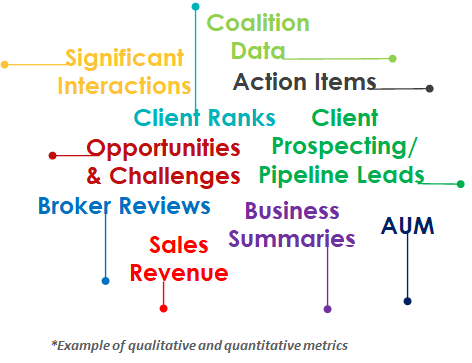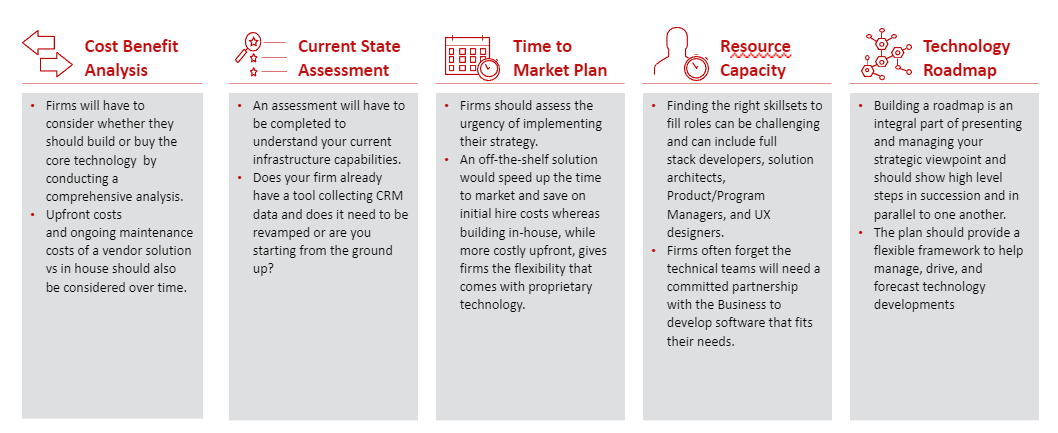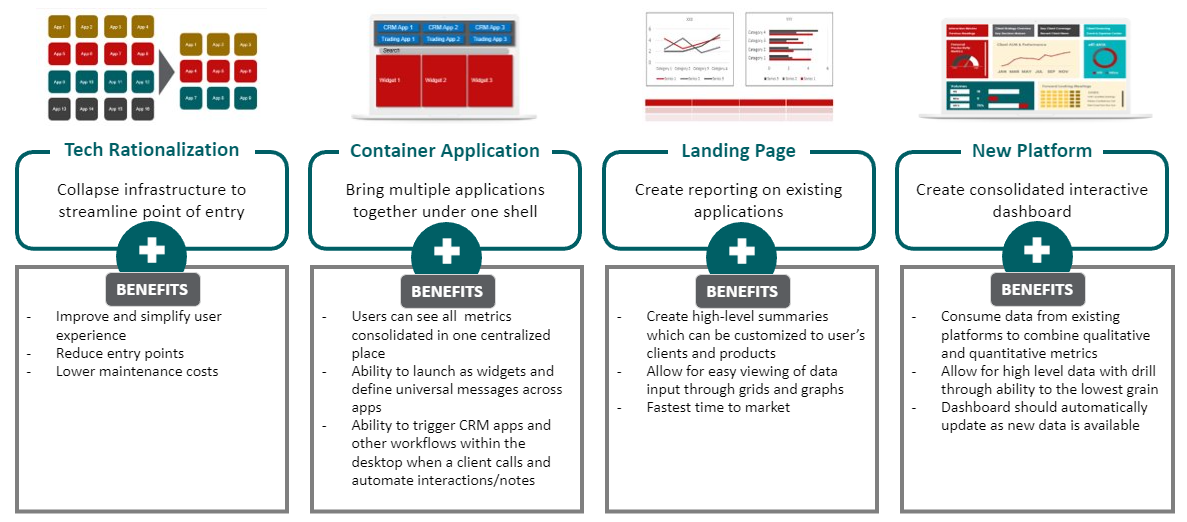Speed Read:
- CRM strategies should be implemented in Capital Market firms to capitalize on growth opportunities by providing sales teams and business managers with better tools and data analytics to increase revenue targets
- Successful CRM strategies involve improvements and advancements in three areas: information input (capture, data storage, and information output (reporting))
- Changing the negative sentiment, assessing goals, and creating a strategic vision are all steps in creating a successful CRM implementation plan
Q3 2022 hedge fund letters, conferences and more
Introduction
Customer Relationship Management (CRM) strategy design should be at the forefront of all revenue producing banks to capitalize on growth opportunities using customized sales tools in conjunction with automation technologies.
Within Capital Markets, firms still lack the ability to efficiently collect and transform qualitative metrics into actionable insights due to complex workflows, fragmented infrastructure, and the inability to report timely and accurate data.
Robust CRM platforms should provide COOs and sales teams with personalized client data and performance metrics that are immediate and actionable – this could be the difference between closing a deal or missing it.
COOs, relationship managers, sales managers, and individual sales should feel empowered by real-time and easily accessible data as they speak with clients and new prospects. Critical to this empowerment is both the input of information and the consumption/output of data.
Unfortunately, this input and consumption have proven to be problematic across the market. By placing an emphasis on CRM strategy, firms can better support the end-to-end customer journey (input), optimize data analytics (output), and with that added intelligence strive for a bigger piece of market share.
Capital markets firms are in a prime space to increase sales and grow market share with a new or optimized CRM strategy though there is typically an unwillingness to adapt, mostly due to a fear of change or of the unknown.
With the right assistance, firms can change their negative sentiment around current CRM strategies, assess new goals and needs, and create a strategic vision to pave the way forward toward more sales.
Historical Impact Across Industries
CRM systems and automation technologies were one of the secrets of high-performing sales across vastly different industries including healthcare, e-commerce, legal, fitness, media, and entertainment. According to statistics collected by Gartner, CRM became the largest software industry in 2017.1 (Five years ago!)
Adoption of CRM tools enabled precision management of all customer interactions and led to the possibility of these customized outreach efforts and an overall better informed and targeted customer experience.
When CRM adoption expanded around 2012, firms began to recognize a large return on their investments. As of 2022, most organizations are averaging a spend of $500,000 to $5 million a year on CRM technology and seeing a large upside.
In research performed by Martech Zone,2 they found that the ROI for CRM software usage can exceed 245%. It is no wonder why this is currently over a $66 billion dollar industry.
Stuck In The Past: For Financial Firms The Problem Is Three-Fold
Why have some capital markets failed at a successful CRM strategy when statistics prove implementation to be so positive? We believe there are three factors, Information Input (Capture), Data Storage Management, and Information Output (Reporting):

A go-forward CRM plan includes four steps to getting unstuck from the past and moving forward to a more productive future:
-
Change Sentiment Around Current CRM Application Offerings
Top four reasons stalling CRM growth and how to turn that negative sentiment around:
#1: Options for capturing information are too complex and time-consuming
- How to solve: Automation and reengineering efforts can simplify and streamline data capture
#2: Management reporting falls short of expectations
- How to solve: Project managers can work with developers and UX designers to reengineer sales tools and applications
#3: Hard to realize upside
- How to solve: Sales and COO teams should evaluate productivity changes over time as CRM enhancements are implemented
#4: External vendor platforms can be costly and are not scalable
- How to solve: Customized options for all budgets are viable both externally and in-house with a dedicated team that can perform a best-fit analysis
-
Assess Goals And Needs
In building out CRM strategy, firms will have to consider whether they should build or buy the core technology behind their CRM. They will need to determine if the assessment and development should be conducted from within the organization or if it is advantageous to hire an external team that may be able to ease the process.
The dedicated strategy team must be available to carry out this assessment and should partner with COOs, sales teams, business managers, and development teams to perform a current state assessment, define opportunities, and build an ideal future state of CRM tools as it relates to data capture, storage, and reporting.
-
Create A Future Strategic Vision
Gathering inputs and outputs more effectively to produce detailed insight into a complete client profile will allow for higher success in future leads across products. CRM data should ideally make its way to sales, management, trading, research, prime brokerage, and C-Suite executives so teams can follow through on tasks in their pipeline and ensure every connection to a client is made with intention.
Firms should assess their current state and choose the strategy that works best. Trends highlighted below are not mutually exclusive and all of them should be a part of a firm’s wider CRM strategy discussion in conjunction with automation opportunities.
Input Target State: A user interface which allows users to swiftly enter real time qualitative data where automation isn’t available
Data Storage Target State: Maintain a stable data warehouse as the golden source of information to house data metrics
Output Target State: Easily accessible reporting for sales, management, and C-Suite executives that enables real time and dynamic metrics to inform targeted approaches
Conclusion
Understanding the infrastructure in the as-is state and formulating a future CRM strategy can feel overwhelming but is achievable with a dedicated team of resources who are experienced in understanding the challenges and opportunities from concept to delivery.
Successful implementation will optimize available information and empower front office teams to create sales strategies based on informed analytics and a comprehensive view of client data. Input usability should be simple, fast, and streamlined.
Data should be stable and accurate. Reporting tools should consolidate quantitative and qualitative data downstream and provide real actionable insight so sales, managers, relationship managers, and COOs perform their duties with a clear focus and intention.
Authors:
- Christina Artieda, Principal Consultant
- Joseph Suh, Consultant
Contributors:
- Trevor Williams, Partner
- Mitali Drews, Associate Partner
- Stephanie Colling, Principal Consultant
References:
- https://www.statista.com/statistics/294537/customer-relationship-management-crm-software-revenue-worldwid/
- https://keap.com/business-success-blog/sales/crm/how-4-different-industries-use-crm-and-automation-technology
- https://99firms.com/blog/crm-statistics/
- http://www.hashcodesolutions.com/increase-sales-using-crm/
- Gartner predicts the future of CRM and customer experience - Zendesk









